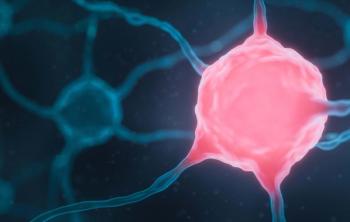
- ONCOLOGY Vol 13 No 3
- Volume 13
- Issue 3
AIDS Drugs Effective Against Most Common HIV Strain
Protease inhibitors, routinely used to treat the human immunodeficiency virus (HIV) in the United States, are highly effective against the subtype C viral strain thought to be most prevalent worldwide, report Stanford researchers.
Protease inhibitors, routinely used to treat the human immunodeficiency virus (HIV) in the United States, are highly effective against the subtype C viral strain thought to be most prevalent worldwide, report Stanford researchers.
Drugs against HIV developed in the United States are tested only against subtype B, the version of HIV-1 that is most common in this country. However, scientists have not known whether protease inhibitors would be effective in treating different viral subtypes that are predominant elsewhere in the world, said Robert Shafer, md, clinical assistant professor of medicine at Stanford and first author of the study.
Both Protease Inhibitors and Reverse Transcriptase Inhibitors Effective
Dr. Shafer and his colleagues did laboratory tests on blood samples from African patients infected with the subtype C virus to determine whether this version of HIV would respond to the new drugs. According to Dr. Shafer and David Katzenstein, MD, associate professor of medicine and senior author of the study, subtype C is responsible for the pandemic in southern Africa and India and is the cause of 90% of all new infections worldwide.
Weve shown that all the [protease inhibitor] drugs are highly effective against the subtype C virus, even though they werent designed for it, said Dr. Shafer. This has relevance to people in developed countries with subtype C and also could be applicable to underdeveloped countries, should treatment become available.
The study appeared in the January 1 issue of AIDS Research and Human Retroviruses. The Stanford researchers conducted a similar study last year involving reverse transcriptase inhibitors and found that these drugs were also very effective against subtype C. That study appeared in the July 1997 issue of the Journal of Virology.
New Treatment Program to Prevent Mother-to-Child Transmission
These laboratory studies have given impetus to a new treatment program designed by Dr. Katzenstein. The program calls for the use of two reverse transcriptase inhibitorszidovudine (AZT [Retrovir]) and nevirapine (Viramune) in HIV-infected women and their infants with the goal of preventing mother-to-child transmission of HIV during breast-feeding.
Dr. Katzenstein, who spent 2 years teaching virology and treating AIDS patients in African, said studies suggest that 5% to 10% of mother-to-child HIV transmissions occur as a result of breast-feeding. In his planned study of 100 women, mothers will receive AZT before and during delivery of breast milk, while infants will receive nevirapine at regular intervals as they are being breast-fed. In the long run, we may be able to develop a strategy to prevent transmission of HIV to kids with a small amount of the drug, which is relatively inexpensive, said Dr. Katzenstein.
Study Protocol
In the two laboratory studies of the AIDS drugs, the researchers used blood samples obtained by Dr. Katzenstein in 1995 from 12 factory workers (11 men and 1 woman) in Zimbabwe who had been infected with the subtype C virus within the previous 6 months. Dr. Katzenstein brought the samples to Stanford, where they were cultured and then subjected to genetic sequencing to determine how much this version of the virus differed from the more common B version in the United States. The researchers also exposed the subtype C viral samples to four different protease inhibitors to see how well they would respond. In all cases, the C samples were found to be highly sensitive to treatment, responding much in the same way as the B viruses do, said Dr. Shafer.
Drs. Shafer and Katzenstein also reported that the primary targets of antiretroviral therapythe protease and reverse transcriptase genesare among the most conserved parts of the HIV-1 genome. Previous studies have shown that the envelope genes (which are relevant to the design of vaccines) of global HIV-1 isolates may differ from one another by about 30%, whereas the reverse transcriptase genes and protease genes of global isolates generally differ from one another by no more than 10% to 12%. Dr. Shafer said it appears that as the virus has evolved during its spread among humans, it has not changed enough to elude current drug treatments.
Drug Costs Still a Big Issue
I think the drugs target something that is very well-conserved. And that is good news, he said. I think well find that drugs work against worldwide strains. There is the bigger issue of getting those drugs to the people who need them.
Protease inhibitors are expensive, with a years therapy costing between $2,000 and $4,000. The cost of AIDS drugs generally has been a major obstacle to treatment of patients in underdeveloped countries, such as Zimbabwe, noted Drs. Shafer and Katzenstein.
In addition to Katzenstein, Shafers colleagues in the study are Teddy K. Chuang and Philip Hsu, both 1997 graduates of Stanford, and Camille Bodley White, PhD, a Stanford research associate. The study was funded by the National Institutes of Health.
Articles in this issue
almost 27 years ago
WHO Declares Lymphatic Mapping to Be the Standard of Care for Melanomaalmost 27 years ago
Navelbine Increased Elderly Lung Cancer Patients’ Survivalalmost 27 years ago
Consensus Statement on Prevention and Early Diagnosis of Lung CancerNewsletter
Stay up to date on recent advances in the multidisciplinary approach to cancer.
































































































